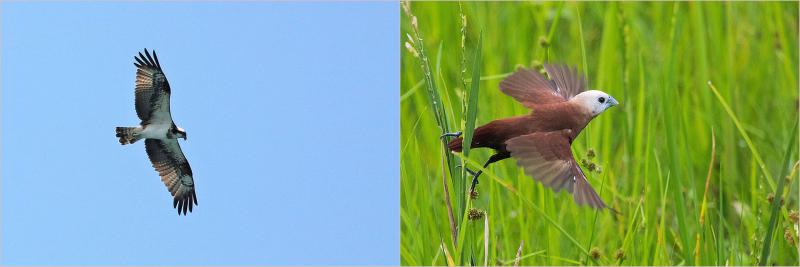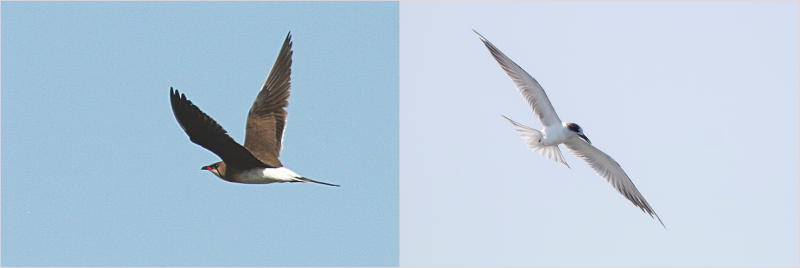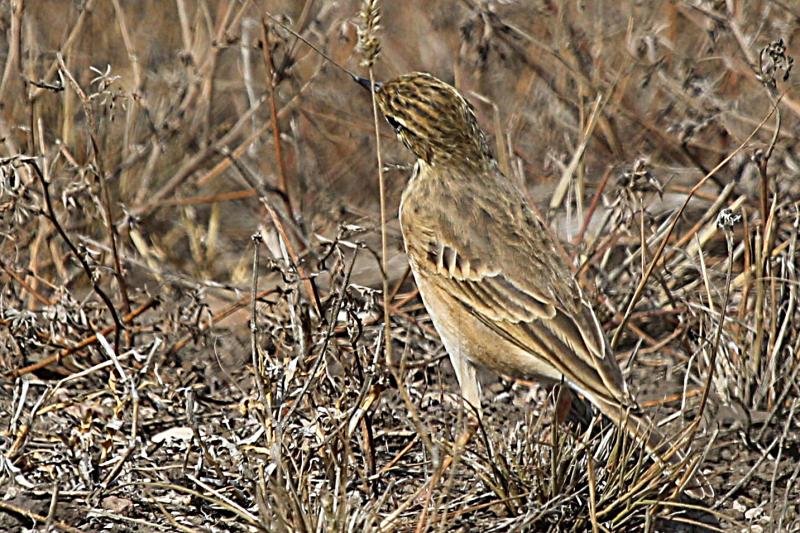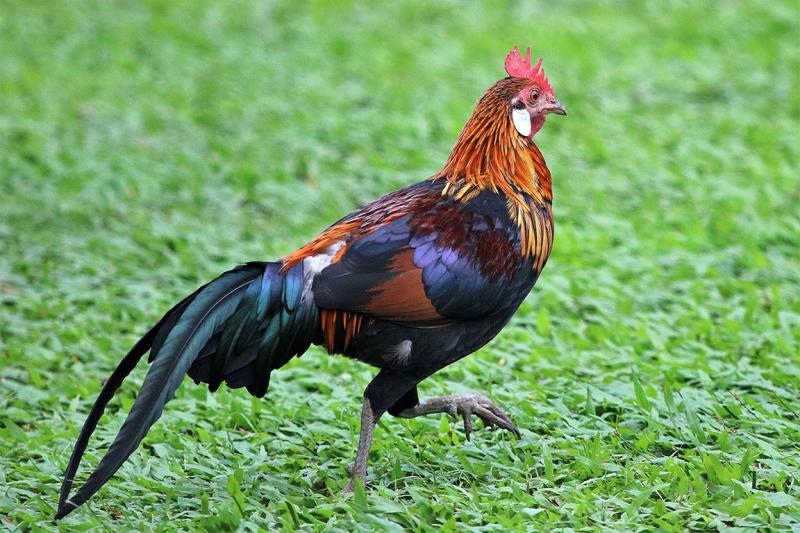5. Activity Centre
Quick quiz your way through the sections in the Feathers chapter.
Know Your Feathers
Here is another chance to go hands on with a range of activities that will check what you know and give you opportunities to look further into the lives of birds. How well do you know your feathers?
1. Why do birds have feathers (see section1)?
2. What are the two main types of feather and how are they modified to enable birds to survive in their natural environment (see.section1)?
3. What is the name given to the science of flight (see section 2) ?
4. Look at the pictures below. What types of flight are the birds equipped for (see section 2 and question 5 in the Quick Quiz)?

1. Thailand 2. Sumatra, Indonesia

3. Azerbaijan 4. Thailand
5. With detailed reference to colour and pattern explain how the pipit below uses camouflage to hide from predators (Section 3)?

African Pipit
6. What are the advantages and disadvantages of the magnificent plumage of the jungle fowl below (section 3)?

Jungle Fowl
7. Why do birds molt and what are the risks (Section 4)?
8. When are the safest times for a bird to molt (Section 4)?
9. What is preening and why is it essential for a bird's survival (Section 4)?
10. What is powder down?
A Bit Harder
11. How are birds equipped for flight (see section 2)?
12. Identify the species in the four pictures of birds in flight in question 4 above. The labels provide the counry where the pictures were taken,
13. How would you identify a bird that is molting (Section 4)?
14. What is the uropygial gland, why is it important, and why do some species of bird manage without one (Section 4)?
Over To You
Watch birds in flight closely. Note in your field diary their different flight patterns: some have fast direct flight, others glide between wing flapping, swerve frequently or lift and drop erratically as they fly. See if the flight pattern helps with identification.
Advanced
15. Prepare a presentation with visual aids explaining the ways in which birds have evolved for flight.
16. Explain the aerodynamics of flight and how different species have adapted to flight in different ways according to their environmental needs (essay or presentation).
17. Write an essay on the advantages and disadvantages of feathers for a bird's survival in the wild.
Helpful Sites
https://www.rspb.org.uk/birds-and-wildlife/wildlife-guides/identify-a-bird/
Try thewildfile site: Bird Watch and Habitat chapters.